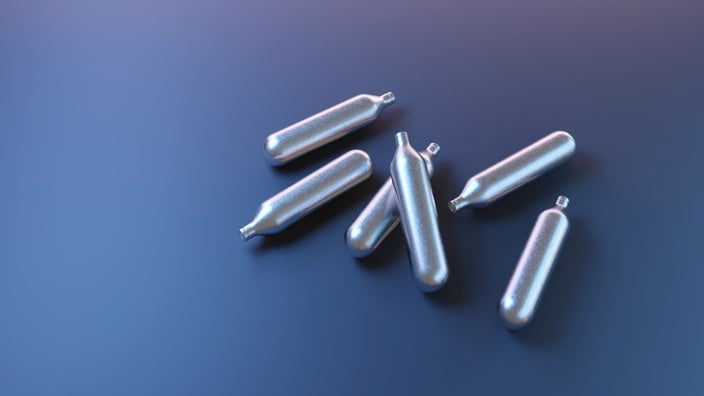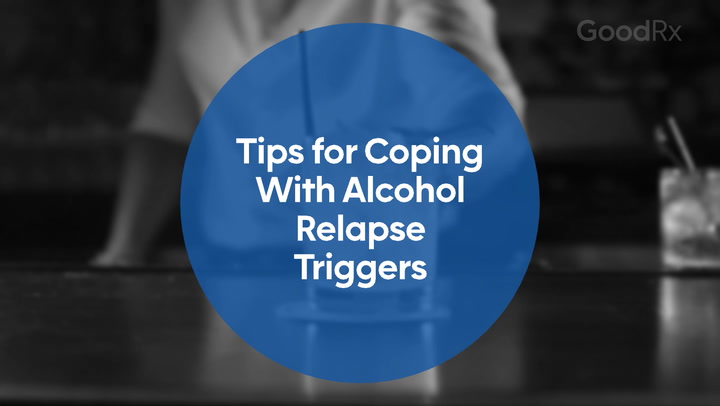
Whippets Are Dangerous. Here’s Why You Should Think Twice Before Trying Psychoactive Nitrous Oxide
Key takeaways:
Nitrous oxide can make you feel “high” when it’s inhaled.
Using whippets can lead to paralysis, injury, coma, and even death.
Nitrous oxide should only be used under medical guidance.

You may have heard of “whippets” — inhaling nitrous oxide gas for a quick high. In fact, people have been misusing nitrous ever since it was discovered as an anesthetic (pain relieving medication) in the late 18th century. It’s also called “whip-its”, laughing gas, nitro, nangs, and hippie crack.
Some people see whippets as harmless fun. But the truth is: Inhaling nitrous to get high can be both illegal and dangerous.
Using nitrous can have serious health consequences — including seizures, permanent nerve damage, and even death. Celebrities like Demi Moore and Tony Hsieh are just a few of the many cautionary tales.
Save on the top 10 pet medications
Save big on common pet medications like Fluoxetine and Levetiracetam at your local pharmacy.

GoodRx is NOT insurance. GoodRx Health information and resources are reviewed by our editorial staff with medical and healthcare policy and pricing experience. See our editorial policy for more detail. We also provide access to services offered by GoodRx and our partners when we think these services might be useful to our visitors. We may receive compensation when a user decides to leverage these services, but making them available does not influence the medical content our editorial staff provides.
What are whippets, and why are they dangerous?
Whippets are containers of nitrous oxide gas. People sometimes inhale from these containers to get “high.”
The most common types of containers are “whipped cream charger” canisters and medical gas tanks. But people who use nitrous to get high often transfer the gas into another container, like a bag or balloon.
Inhaling nitrous can lead to a giddy, euphoric, floating feeling. This only lasts for a couple of minutes. The effects don’t last very long, so some people inhale the gas repeatedly.
Inhaling nitrous oxide is risky to your health. Nitrous can:
Make you feel dizzy and confused
Cause you to fall down or pass out, leading to injury
Cause you to behave recklessly or dangerously, due to loss of inhibition
And if you breathe in too much nitrous, your body and brain won’t have enough oxygen. This is called suffocation. You can lose consciousness, go into a coma, and even die.
Nitrous can also have an effect on your physical health. Short-term effects include:
Nausea
Headache
Sudden heart failure
Seizure
Choking
Using nitrous oxide repeatedly can be especially bad for your health. Long-term effects include:
Liver and kidney damage
Bone marrow damage
Lung damage
Brain and nerve damage
Coordination and movement problems
Hearing problems
Vision problems
Pregnancy problems, including harm to your unborn baby
Whippets are especially dangerous if you put a nitrous-filled bag over your head, or use a gas mask. It’s also very dangerous to inhale nitrous in an enclosed space, like a bathroom, car, or closet.
Do whippets damage brain cells?
It’s possible, especially for people who use them over the long term.
Nitrous oxide can block vitamin B12 in your body. Vitamin B12 is vital for nerve health, making red blood cells and repairing body tissues. Whippets can cause your B12 levels to drop, which can lead to nerve damage in your brain and spinal cord, or even paralysis.
In some cases, the damage is reversible — but only if you get medical attention in time.
Why do people think whippets are harmless?
Many people see whippets as a harmless activity. This is partly because whippets are often sold openly at concerts, festivals, and other public activities.
Nitrous oxide might also seem harmless because it can be easy to get. In some states, nitrous oxide can be purchased online, at smoke shops, or in cooking-supply stores. This may give some people the mistaken impression that whippets are safe.
Is nitrous oxide ever safe to use?
Nitrous oxide gas is only safe when it’s used by a medical professional. Dentists and other healthcare professionals use nitrous oxide for:
Sedation
Anesthesia
Pain management
Alcohol dependence and withdrawal
But be aware: When nitrous is used for medical reasons, it’s mixed with oxygen for safety.
Whipped-cream canisters and nitrous gas tanks do not contain oxygen. This is part of the reason it’s so dangerous to inhale gas from them directly.
How does nitrous oxide work?
Scientists don’t know exactly how nitrous oxide works. It may affect certain chemicals that control pain in your body. It may also affect how your body regulates pain and pleasure. In one study, the brainwave patterns (EEG) of people on nitrous looked similar to a very deep sleep.
Here’s what scientists do know: Nitrous oxide directly affects your oxygen levels. When you inhale nitrous oxide, it fills your lungs — blocking oxygen from getting into your body. This causes the oxygen levels in your brain and body to drop, leading to suffocation.
What other legal inhalants are risky if used as a drug?
Nitrous oxide is a type of drug called an inhalant. An inhalant is any substance that can affect your brain when inhaled.
Other inhalants that are legal to buy — but illegal to inhale — include:
Correction fluid (Wite-Out)
Spray paints
Markers
Glues
Gasoline
Shoe polish
Cleaning fluids
Just like nitrous oxide gas, these substances can be dangerous. Inhaling them can cause serious health problems. The FDA has advised against using poppers as a drug, due to their potentially serious health effects, including death.
The bottom line
Nitrous oxide might be easy to get, but that doesn’t make it safe. Remember: Inhaling nitrous oxide can put you at risk for injuries, multiple health problems, and brain damage. In some cases, it can even lead to coma and death.
Why trust our experts?



References
Alcohol and Drug Foundation. (n.d.). Nitrous oxide.
Allen, J. E. (2012). Whip-Its: Brief highs, big dangers for Demi Moore? ABC News.
Backman, I. (2024). Nitrous oxide effects are reversible with early treatment. Yale School of Medicine.
Cartner, M., et al. (2007). Paralysis caused by “nagging”. The Medical Journal of Australia.
Gillman, M. A. (2019). Mini-review: A brief history of nitrous oxide (N2O) use in neuropsychiatry. Current Drug Abuse Reviews.
Harker, D. M. R., et al. (2021). B12 deficiency and clinical presentation in the setting of nitric oxide use. Case Reports in Neurological Medicine.
Howard, M. O., et al. (2011). Inhalant use and inhalant use disorders in the United States. Addiction Science & Clinical Practice.
Marcus, E. (2021). Nitrous nation. The New York Times.
National Institute on Drug Abuse. (2023). Commonly used drugs charts.
Nobre, L. C. C., et al. (2005). Methodological and logistic issues regarding a study on mortality caused by violence at work and work related injuries in Salvador, Bahia, Brazil. Occupational and Environmental Medicine.
Pavone, K. J., et al. (2016). Nitrous oxide-induced slow and delta oscillations. Clinical Neurophysiology.
Quax, M. L. J., et al. (2020). Frostbite injury: An unknown risk when using nitrous oxide as a party drug. Acta Chirurgica Belgica.
Stockton, L., et al. (2017). Nitrous oxide-induced vitamin B12 deficiency. Proceedings (Baylor University Medical Center).
Talk to Frank. (n.d.). Nitrous oxide.
Thompson, A. G., et al. (2015). Whippits, nitrous oxide and the dangers of legal highs. Practical Neurology.
U.S. Food and Drug Administration. (2021). FDA advises consumers not to purchase or use nitrite “poppers”.
Volkow, N. D. (2020). Letter from the director. National Institute on Drug Abuse.
If you or someone you know struggles with substance use, help is available. Call SAMHSA’s National Helpline at 1-800-662-4357 to learn about resources in your area.

























